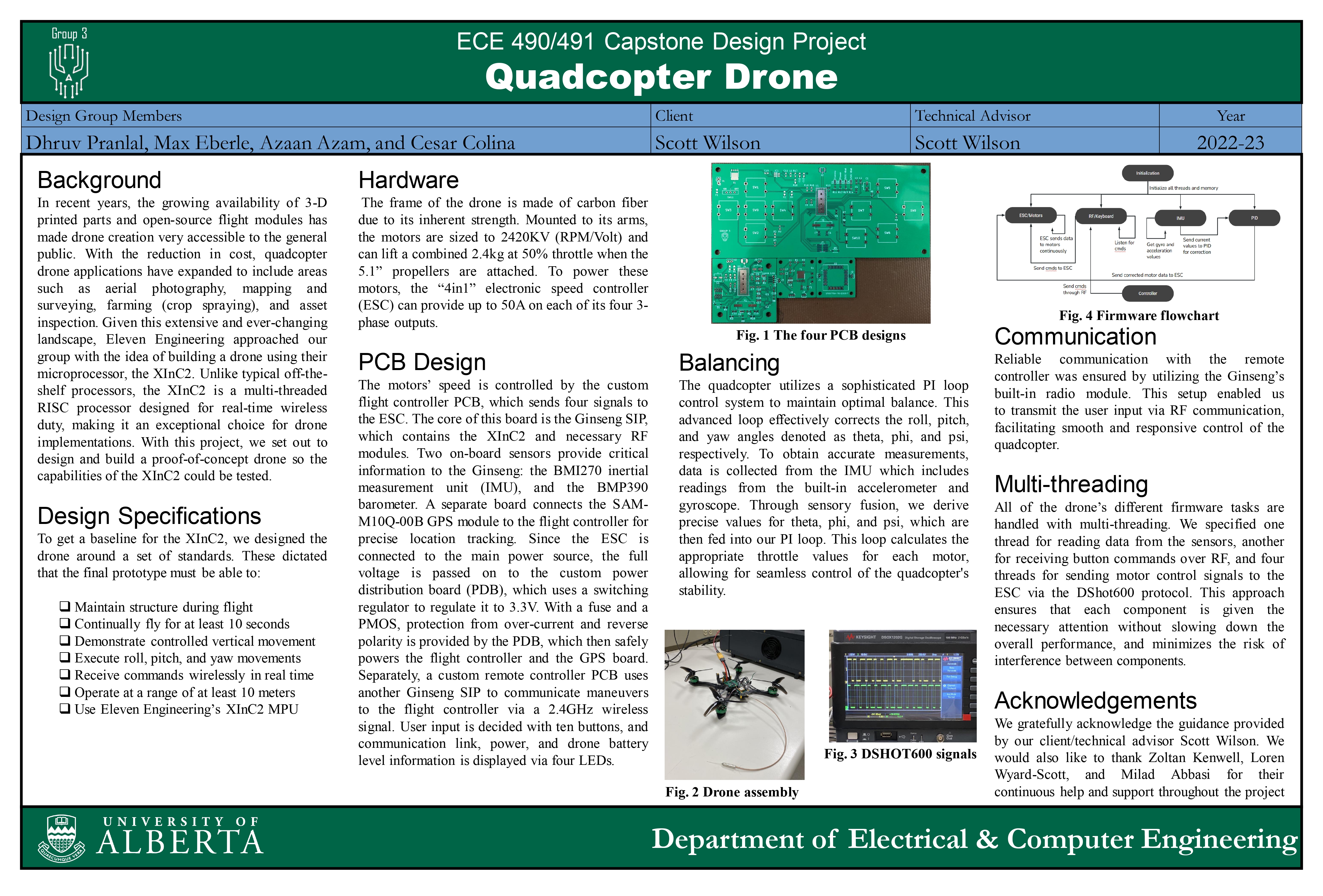Projects from the Department of Electrical Engineering
Team Members: Alvin Du, Anh Nguyen, Prasad Uchil, Ritvik Gera
The primary objective of our system is to improve on the safety, control, and overall user experience of manually operated wheelchairs, all while preserving the inherent portability that motorized alternatives lack.
Discipline:Electrical Engineering
Team Members: Dhruv Pranlal, Max Eberle, Azaan Azam, Cesar Colina
In recent years, the growing availability of 3-D printed parts and open-source flight modules has made drone creation very accessible to the general public. With the reduction in cost, quadcopter drone applications that have expanded to include areas such as aerial photography, mapping and surveying, farming (crip spraying), and asset inspection. Given this extensive and ever-changing landscape, Eleven Engineering approached our group with the idea of building a drone using their XInC2 microprocessor. Unlike typical off-the-shelf processors, the XInC2 is a multi-threaded RISC processor designed for real-time wireless duty, making it an exceptional choice for drone implementations. With this project, we set out to design and build a proof-of-concept drone so the capabilities of the XInC2 could be tested.
Discipline:Electrical Engineering
Team Members: Wael Zahr, Alexander de Souza, Tony Ding, Richmond Tran
This device aims to convert a frequency signal to an analog signal with less than 5 % linearity error. The input frequency signal is a 0 - 10 kHz, 30 - 100mV pk-pk signal from a hall effect sensor. The output analog signal is the standardized 0 - 10VDC and 4 - 20mA DC signal. The device is meant to act as a data acquisition unit to be used in industrial applications, such as motor control. In our case, the frequency signal is from a hall effect sensor. The design consists of four sequential blocks and is powered by a 24VDC power supply. First, the input frequency signal is inputted into a Schmitt trigger which will convert the signal into a 5V perfect square wave of the same frequency, to be fed into the computing unit, which will output a corresponding 0 - 5 VDC. The voltage is then amplified by 2 with the use of a voltage op amp, achieving a 0 - 10 VDC output. If current is the selected output type, the 0 - 10V signal is switched into inputting into the current transmitter, creating an output current loop of 4 - 20 mA DC.
Discipline:Electrical Engineering
Explore
Explore projects from other disciplines!


